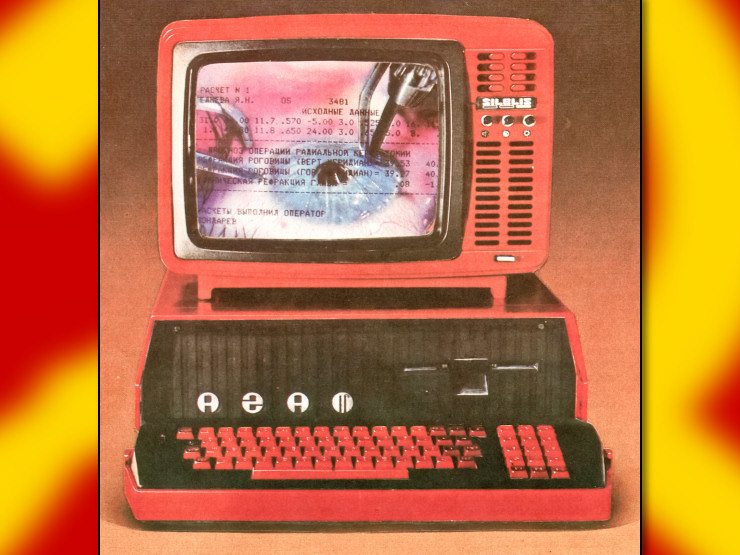“Communist China is developing open-source chip architecture to dodge our sanctions and grow its chip industry,” Rubio said in a statement to Reuters. “If we don’t broaden our export controls to include this threat, China will one day surpass us as the global leader in chip design.”
How dare they use MY free market against ME?
… I’m lost. So China is developing a technology that can be inspected and used by anybody, and Americans are upset because… it might be more advanced than theirs? What export controls do they propose? A Great Wall of Github so Chinese scientists have to use VPNs to research code?
The CCP (Chinese Communist Party) is abusing RISC-V to get around U.S. dominance of the intellectual property needed to design chips. U.S. persons should not be supporting a PRC tech transfer strategy that serves to degrade U.S. export control laws
Abusing. Lmao. In capitalist America, the government wants to force you at gunpoint to monetize your creation
deleted by creator
These motherfuckers. If I live another 50 years I still won’t have public healthcare and I’ll still be on x86 because of them.
An interesting fact about RISC-V is that NASA is standardizing on it as the basis for future space-based computer systems. The idea is to reduce dependence on proprietary systems in favour of standard modules that could be sourced from multiple vendors.
Edit: Here’s a press release from one of the vendors that NASA picked for their first round. It’s definitely worded in a way to play up that vendor’s own PR, but they’re not wrong about the major benefits that come with switching from proprietary CPU architectures to an open-source one that’s reached a very mature state.
Do we even have a NASA anymore? I thought it was all outsourced to Musk, Co by now.
The dirty little secret of NASA, specifically to benefit the defence contractors that pay off the senators who control NASA’s pursestrings, is that it has always relied on private companies. NASA does not, and never has, built a production rocket or a crew vehicle. They build only prototypes for R&D purposes, then hand that R&D over to private companies. They outsource construction of production rockets and crew vehicles to for-profit companies. Literally the only change in the “commercial” aspect nowadays is that they’re also allowing those companies to do design work as well (under close supervision).
Here’s a brief history of American rockets and crew vehicles:
Even before WW2 was over and Operation Paperclip gave a bunch of nazis jobs at NACA (later NASA), the US Army Air Force contracted out the reverse-engineering of captured V-2 rockets to the Chrysler corporation. Yes, the car company. That was on the basis of their engineering acumen.
The famous X-15 rocket plane (best known to the general public as the suborbital craft that Neil Armstrong flies in the opening scene of the movie “First Man”) was built by North American Aviation (later known as North American Rockwell, later later Rockwell International).
Mercury, the original crewed space program, used crew vehicles built by McDonnell Aircraft (later part of McDonnell Douglas, later later part of Boeing). The two rockets in the program were also built by McDonnell Aircraft: first the Mercury-Redstone, and later the Mercury-Atlas.
The next crew vehicle, Gemini, was also built by McDonnell Aircraft. It rode on a rocket called the Titan II GLV, built by the Glenn L Martin company, which was the “Martin” in “Lockheed-Martin”. That rocket was a derivative of the Titan II nuclear ICBM.
The moon-landing Apollo program’s crewed command module was built by the aforementione North American Aviation. The lunar lander was built by Grumman (later known as Northrop Grumman). The legendary Saturn V, to this day the most powerful rocket to ever successfully fly a mission, had stages built by Boeing, North American Aviation, and Douglas (later merged with the aforementioned McDonnell Aircraft).
The US space shuttle, officially called the “Space Transportation System”, was built by Rockwell. Its iconic big orange fuel tank was built by the aforementioned Martin. The solid-fuel boosters were built by Thiokol, which has had so damn many mergers and name changes but is now part of the same Northrop Grumman that built the Apollo lunar lander. They’re still building lengthened versions of those same boosters for the new MIC grift called SLS. SLS is the US senate’s way to keep space shuttle contractors pockets lined with cash by cobbling together a frankenstein of 1970s-era-design space shuttle spare parts. It’ll cost billions per launch, and is production-rate-limited to flying about once every two years.
The same goes for every single rocket that has ever put a NASA payload into orbit. Not a single NASA space probe has ever launched on a NASA-built rocket. Not one.
I’m not trying to defend Musk here. I’m just trying to get the point across that the “new” commercial direction is really nothing new. All that’s changed is that NASA is being slightly more hands-off with regards to design. They’re still keeping a tight leash on quality control, thankfully.
TIL
I forgot to mention another difference that’s genuinely significant, but is more on the financial side than the engineering side. Those rockets and crew vehicles I listed above were typically paid for on what’s called a “cost-plus” contract basis - i.e. if the cost of a project goes beyond the original estimate, the companies get extra money to cover that from the US government, no questions asked. The MIC loves these cost-plus contracts for obvious reasons.
But a lot of newer rockets and crew vehicles that NASA uses are under fixed-price contracts, which are exactly what they sound like. Also under fixed-price contracts are things like cargo delivery to the ISS using commercial vehicles. The MIC hates these because it means they can’t milk NASA for extra cash. They have to perform on time and on budget, or else they lose money, and NASA isn’t legally on the hook for a single additional penny. Anything SpaceX does for NASA is under a fixed-price contract. So are the other new companies in the launch or cargo business like Rocket Lab (small satellites) and Sierra Nevada (who are developing a cargo/crew spaceplane called Dreamchaser). But the biggest slap in the face to the MIC with regards to aerospace fixed-price contracts is the Starliner crew vehicle, built and launched by Boeing.
A bit of background. After the space shuttle program ended, NASA wanted a replacement crew vehicle that could launch from a US facility so that they didn’t have to rely on Soyuz crew vehicles launched from Russia. But they didn’t want to risk more years-long program shutdowns like after the Challenger and Columbia disasters, so they put out a tender for two crew vehicles, each made by different companies. If one was grounded due to some accident investigation, they wanted to still be able to launch crew to the ISS.
The US senate, all bought and paid for by the MIC and self-professed proud capitalists, found themselves in the uncomfortable situation of trying to keep the MIC grift going while professing to cut down on “wasteful spending” and promoting private business. In the end after a whole lot of public and private arguing a compromise was reached. Boeing would get about $5 billion to design, build, test, launch, and operate the Starliner capsule for up to six operational flights to the ISS. SpaceX got about $2.6 billion for the exact same requirements - yes, half what Boeing got. Everyone thought Boeing was the safe bet, and that SpaceX was the risky option. But what happened is that SpaceX met all the timeframe and safety and design and budget goals, and have now launched six operational NASA crew flights (plus a few others for non-NASA customers). And the worst thing that’s ever happened on a Crew Dragon flight is that a primary toilet once stopped working and they had to use a backup toilet. (Everything is redundant in crewed spaceflight.)
But Boeing is fucked.
Boeing has been years late in developing Starliner. They’ve blown well past their internal budget. So far they’ve lost more than $1.6 billion that NASA is not legally on the hook for. The first uncrewed test flight was a years-late disaster that almost resulted in the test vehicle behind lost in two different ways. The onboard clock was 10 hours off, resulting in the vehicle doing the wrong things at the wrong times, and that cannot be allowed to happen in spaceflight. It was only during the emergency in-orbit software fixes for that problem that they found another software problem that would have resulted in a dead crew (if there had been crew on board).
The short version of that second problem is that the Starliner vehicle is in separate parts: the capsule that comes back to Earth with the crew, and the support hardware (the “service module”) that’s jettisoned before re-entry. Pretty normal for capsule-type crewed spacecraft. Russia’s Soyuz does it, Apollo did it, NASA’s Lockeed-Martin-built Orion will do it, China’s Shenzhou does it, etc etc etc. The jettisoned service module was supposed to do a 90° turn and then fire its engines to get well out of the way for safety so that they’re on very different re-entry trajectories. But what was actually programmed was an incorrect thruster firing sequence that would have slammed the service module straight ahead into the heat shield at high thrust. That would be a death sentence for the crew. If they didn’t die immediately from structural failure, they would have died on re-entry Columbia-style as the heat shield failed.
Boeing has done one semi-successful uncrewed test flight since that they’ve had to pay for out-of-pocket. Those out of pocket costs include buying an extra rocket launch at over $400 million. And that launch was plagued with delays and technical problems that have basically grounded the program. Their first crew mission was supposed to fly in 2017. It’s now looking like it won’t fly until next spring at best assuming no further technical issues, a 7 year delay. And not only have Boeing never flown a crew to the ISS, but SpaceX has picked up contract extensions to be Boeing’s replacement on the crew rotation schedule.
Boeing has been able to weasel a few hundred million from the US senate since then, but even the corrupt senators know that they can’t do much more public than that without pissing off both deficit hawks and the general public. Management at Boeing’s aerospace group are rumoured to be in panic mode. Starliner’s problems are bleeding them cash, but if they outright renege on their contract, they risk losing lucrative military contracts to their rivals.
Again, I’m not trying to defend the prick who owns most of SpaceX. I’m just laying out the facts of the current situation. Of course I’d love to live in a world where NASA has free rein to allocate money as they alone deem necessary, and to actually build production rockets and crew vehicles in-house as they currently do with science probes. But if I had to choose between fixed-price SpaceX and the cost-plus MIC grifters, I’ll begrudgingly pick the former.
So what’s happened is that a whole lot of people in the media who get their paycheques in part or in full from the MIC are doing all sorts of hand-wringing about the “commercialization of space”, when they’re really just acting on behalf of their MIC paymasters who are pissed that they can’t do the usual old cost-plus grift anymore.
Again, I’m not trying to defend the prick who owns most of SpaceX.
Well, its an open secret that SpaceX has an entire department dedicated to gaslighting Elon into thinking he’s in charge.
Maybe Boeing needs one of those.
So what’s happened is that a whole lot of people in the media who get their paycheques in part or in full from the MIC are doing all sorts of hand-wringing about the “commercialization of space”, when they’re really just acting on behalf of their MIC paymasters who are pissed that they can’t do the usual old cost-plus grift anymore.
Sure. And I’ve heard similar critiques of the media whining about the F-35. But when we’re pissing away a trillion a year anyway, idk, man. Its nothing I’d applaud on its face.
Especially after the budget-conscious bungles SpaceX has already made (the dirt launch pad that exploded, the Starlink debacles, etc) I’m still highly skeptical that we’re going to see the US space program as more than a vehicle launch cheap satellites in another generation or two.
Just the pick me up I needed today, another one of your fascinating space industry posts!

of course NASA still exists, and its budget is almost three whole dollars
Of course NASA still exists. Musks spacex focuses more on commercial launching for other corporations. NASA would still handle exploratory launches.
Space expedition and progress is more of an international job, and NASA would be the body to refer to for the U.S side of it.
The ISS is basically a collab effort between the US (NASA), Canada(CSA), Russia(Rocosmos), Europe(ESA) and Japan(JAXA)
Sounds like a RISC-Y move.

That’s a RISC-A move
lmao all the undergrad computer architecture classes teach using RISC-V as the example. An entire generation of engineers are gonna graduate with an education for something they legally can’t work on.
Luckily China is happy to pay American engineers to work for them
Meanwhile, the americans drive away Chinese scientists and engineers with their fanatic racism
 :i recieve: technology // you recieve: fanatic racism
:i recieve: technology // you recieve: fanatic racism
Debian has already had a great amount of their packages working with RISC-V (enough for a simple GNOME desktop)
Free software is finally looking to trash amd64 and x86 in the coming decade or so as the default architecture. It would be incredibly awesome if China has the first GNU/NonGNU linux distribution.
Perhaps the year of the Linux desktop will be a Communist victory.
Deliberately falling behind in your own self-imposed technology war to own the Asians
this is super hilarious because it might actually just be protectionism for ARM cuz ARM vosts money but riscv doesnt
I’m old enough to remember when the V-chip was going to be the perfect solution to the censorship problem.
Now it’s been relegated to Evil China CCP

only someone who has something to gain from this would think this is a good idea cough ARM cough
I was just reading about RISC-V yesterday. Apparently Pine64 makes tablets that use the architecture but they are still basically in development mode for the time being:
https://pine64.com/product-category/pinetab/
I’ve got a PinePhone and I really like it so far (although it uses an ARM chip). It’s not quite up to par with mainstream phones in all regards, like the camera is kind of crappy and there are some software bugs but to be fair I was aware that it was still in beta when I bought it.
All the components are replaceable, and it even has kill switches for the mic/camera/etc on the back. My favourite part is that it runs KDE.















